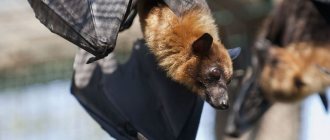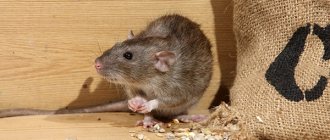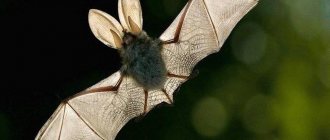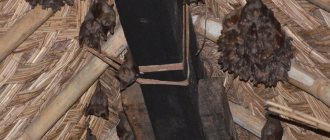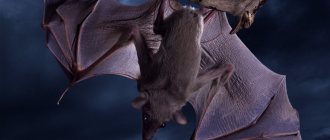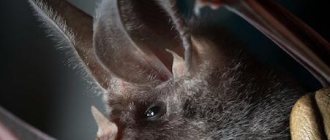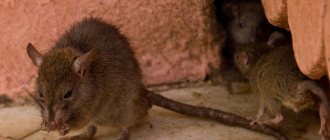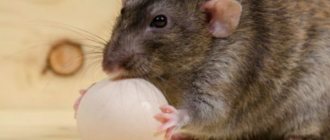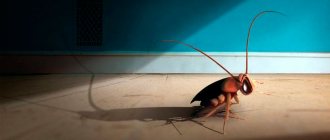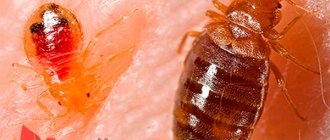Bats in the attic - these are the very words that for many homeowners sound like a death sentence. After them, I mentally want to take out all the inhabitants of the house, pets, valuables - and run beyond the horizon in search of new housing.
Especially if a large colony of these animals has settled in the house. And all because there are a lot of rumors around bats, and people tend to be afraid of these flying creatures. And, moreover, few people know how to get rid of them correctly.
The most important myth about bats is that they are vampires and feed on human blood. In most cases this is not the case. Yes, there are certain subspecies that prefer blood (note, the blood of animals, not people).. They are dangerous and carry diseases, but you still need to look for them and attack them yourself to be sure to bite them. The vast majority of bats that a person may encounter in a home feed on insects (mosquitoes, flies, etc.) or, which is much less common, small animals like frogs. So these pests are not really pests after all. These can be “tamed” and special houses can be built for them. Although there are species that feed on fruits, even then they can cause damage to gardening. As you understand, it is better to scare them away from your lands. This is what we will talk about today.
If you try to drive them out at the wrong time of year, you will find in the spring that your area has become a haven for midges, mosquitoes and various beetles. An unpleasant surprise, isn't it? To prevent this from happening, we have written this guide for you - you need to get rid of bats wisely. First, we will tell you about their habits and life, how to smoke them out of the attic, we will teach you what to do if a bat flies into your house, we will find out which repellents work on them and which do not.
About bats
To begin with, there are too many rumors, speculations and artistic images around these animals.
Here are the most common:
- feed on flesh
- drink blood
- bite and transmit infection.
Also, their appearance, of course, evokes emotion in few people. That is why the appearance of bats near a person does not make people happy at all. The reality is that bats living in the European part of Russia are harmless and safe creatures for humans.
What worries us all first is what they eat. So, their main diet is insects, which, by the way, especially bother us, namely mosquitoes, flies, moths, etc. A rare exception in the diet of bats is frogs. As you understand, to some extent, they are even assistants.
There are, of course, species that still feed on fruits. Such “neighbors” can already cause damage to your fruit plantings.
But, as a result, bats definitely won’t eat people and drink their blood.
Naturally, bats still pose a danger to people. Animal excrement is saturated with fungal vapors, which, when entering the human lungs, can cause serious illness. Bat excrement, also known as guano, has a pungent odor, oblong shape, and color from earthy gray to black.
But it is worth noting that this fungus is also present in bird excrement. So, of course, there is a chance of inhaling it from bat droppings, so you must follow a number of rules, which we will describe below. Biting is absolutely not a typical behavior for bats. After all, even if an animal is sick with rabies, it would rather become lethargic and apathetic than rush at people and animals. But if a person is bitten or scratched by a bat, it is better to immediately consult a doctor for vaccination and treatment.
Also, bats can damage the attic space, or the construction materials that are around.
Well, and most importantly, they can frighten the residents of the house with their unexpected appearance.
Although we now understand that they are not particularly dangerous, such a “neighborhood” is unpleasant in any case, to some extent has its consequences, and it is better to get rid of it in a humane way.
Animal lifestyle
Bats are small animals from the order of mammals. Their front legs are equipped with special membranes, thanks to which they can fly. Animals make their main flights at night, which sometimes frightens people. Features of life:
- The animals that live in Moscow and the Moscow region are harmless. If you don't offend them, they will never attack a person. They feed exclusively on insects, and not on human blood, as many believe. They are beneficial because they eat mosquitoes. One individual is capable of catching up to 200 mosquitoes in an hour.
- The bat lives in secluded, hidden places where it spends most of its time. These are mainly basements or attics of houses. A 10-centimeter gap is enough for them to get into the room. They mostly settle in whole colonies and only occasionally alone. They sleep in a suspended state upside down, clinging with their claws to a reliable support under the ceiling.
- The bat has excellent orientation in complete darkness and is capable of avoiding any obstacles in flight, as it has good ultrasonic echolocation.
- Mammals hunt at night. They eat some of the prey themselves, and bring the other home to feed their young. One female can breed up to 3 babies per season. The cubs begin to hunt independently in August. Watching the flight of bats, you can notice that by autumn, there are much more of them in the night sky.
Most often, young individuals who do not yet have enough experience can fly into the windows of apartments and onto balconies. They fly into the window following insects that they were chasing or accidentally, by mistake. Sometimes an animal ends up in an apartment during migration. Not finding a secluded place on the balcony, the mouse begins to rush around the corners.
Neighborhood Danger
Seeing bats in the house, every homeowner asks why they are dangerous and how to get rid of them. You need to know that the animals are not particularly dangerous if you do not touch them with your hands. But at the same time they cause a lot of other troubles:
- Chiropterans leave behind a lot of waste products that smell very strong and bad. Living with such a smell in a house sometimes becomes impossible.
- You can understand that winged mice have occupied the house by the noise, reminiscent of squeaking and rustling. They are nocturnal and are activated at night. Such noise frightens people and prevents them from sleeping at night.
- Animals often damage the roof. They chew through waterproofing material and insulation.
- Bats cause unsanitary conditions in the attic. Chiropteran droppings are infested with various parasites and pathogens of infectious diseases, so they must be disposed of immediately and the room thoroughly disinfected.
Carriers of dangerous diseases
Compared to other orders of mammals, bats are the most susceptible to pathogens that are dangerous to humans. What diseases should you be afraid of:
- Rabies. Some species of bats are carriers of the rabies virus. The virus is transmitted to a person through a bite.
- Marburg virus. When a person becomes infected with the Marburg virus from an animal, severe hemorrhagic fever occurs. This often leads to death.
- Ebola. When bitten by a mammal, you can become infected with an acute Ebola virus infection, which is subsequently transmitted from person to person. Bats themselves do not suffer from this disease, although they are carriers of this virus.
- Histoplasmosis. Animal feces contain an infection called histoplasmosis. This is a fungus that can easily become infected. It is enough to be near excrement and inhale its dangerous fumes.
- Parasites. A variety of parasites can live on flying animals. But they are not dangerous for people, since they live only on animal fur.
Reasons for appearance
In nature, to create places for their settlement, bats choose dry, dark, high-altitude places, natural depressions - caves, hollows, etc.
Human dwellings, firstly, attract bats with high altitude - this is the reason for the sudden appearance of bats in the attics of residential high-rise buildings, balconies, etc.
Private houses are also tempting - bats choose non-residential premises and spaces because they are dark, dry and quiet - attics of houses, barns, chimneys, etc.
In nature, bats tend to lead an active lifestyle from spring to autumn. Then, the animals either fly away to warm countries or hibernate.
But, since a person’s home is, first of all, an approximately constant temperature, this is exactly what they like, and bats on the roof of a house can continue to remain, multiplying their offspring, without changing place.
That is, they appear in our houses and on roofs only because they are looking for a reliable place for breeding offspring and further life.
And, it should be remembered that they arrive in whole colonies at once, and not in separate “pairs”.
What are harmful things in the house?
When you see a bat flying out of a room, you should not panic. It is necessary to know exactly what harm bats can cause to humans.
Although they are peaceful creatures, when you try to catch them with your hands, and sensing danger, they can bite painfully. It must be remembered that some animals are infected with the rabies virus, which can be transmitted to humans. Also, unpleasant residents leave behind droppings, which, if inhaled, can cause a person to contract histoplasmosis. Finally, if you have bats in your area, forget about restful sleep. Because they will squeak and grind their claws, which will not allow you to continue to live in comfort. But if there are animals in the country, you should think about whether to kick them out. Because these creatures even help humans. They perfectly protect plantations and crops. Even if the decision is made to remove uninvited guests from the dacha, it is necessary to do this using humane methods.
How to understand that bats have settled under the roof
- The first and most obvious thing is that you will see them . Bats are nocturnal and sleep during the day. You can see them in the evening or at night, that is, just when they begin to fly out for food or to drink.
- You will hear them . It is at night that bats squeak, scratch, and rustle, which can disturb the peace of people. Since bats can penetrate into a gap of about 1.5 cm, bats can even live under the façade cladding.
- excrement emit an unpleasant odor, which, in addition to the usual discomfort, can also pose a threat, which we mentioned above. Besides the smell, the amount of droppings is always very large, so when looking for bats, the first thing you will see is a large amount of droppings.
Features of bats
Bats belong to the order Chiroptera. But they are not “relatives” of ordinary mice. They are considered primates. These animals are nocturnal, despite their rather poor eyesight, and are perfectly oriented in the dark. Bats emit ultrasound, which helps to accurately distinguish small stones from insects over long distances. It is thanks to echolocation that they move in the dark. Below are some more interesting facts about bats.
- Life cycle. Bats live longer than dogs. On average, the lifespan of a “mystical” animal is 25-30 years.
- Dimensions. Bats, depending on the species, may have different parameters. Some individuals do not exceed the dimensions of a bumblebee in size. But there are also real giants, whose wingspan is 2 m.
- Ancient inhabitants. According to archaeological excavations, bats inhabited our planet approximately 55 million years ago. These animals have been practically untouched by evolution. Their remains are no different from modern individuals.
- Body temperature. Can vary from −7ºС to +48ºС.
- State of numbness. In winter, bats, deprived of the opportunity to get their own food, prefer to do nothing. Goes into a sleep state. This numbness can last up to eight months. The animal independently slows down metabolic processes and lowers body temperature. In the event of severe frosts, they can turn into real “icicles”, but with the arrival of warmth they thaw and continue their life activity again.
Bats breed once a year. Babies are conceived during wintering. The offspring are never numerous. Usually in the summer only one mouse is born. Sometimes two cubs may be born.
Area
These animals choose secluded, dark and completely safe shelters during the daytime. In the wild, they settle in rock crevices, caves, abandoned burrows and hollows, on the slopes of dunes, even in the recesses of walls.
Human activity is leading to the destruction of natural bat habitats. The animals are forced to look for new shelters. They quickly adapt to the new environment and settle next to humans. The winged ones inhabit abandoned adits and mines, attics, cellars, cellars and forgotten bell towers. Uninvited guests can be found in haystacks and on balconies.
Bats are unable to take off from the ground because they have rather large wings. Therefore, they choose places to rest from which they can throw themselves headfirst.
Nutrition and main types
Despite the vampirism attributed to them, most species are quite peaceful and vegetarians. However, not all. Food preferences depend on the type of mouse. More detailed information is provided in the table.
Table - Types of bats
| Species name | Description | What do they eat? |
| White (tailless) | — They have a length of up to 4.5 cm, small ears and an unusual nose; — live in Honduras, Panama, Costa Rica, Nicaragua; — settle in the huge leaves of heliconia, forming a family of 5-6 individuals | Fruits |
| Vechernitsy | — Inhabit North Africa and European countries; - have large sizes (length 10-50 cm); — fly at a speed of 60 km/h; - live in deciduous forests | — Beetles; - butterflies; - small songbirds |
| Fruit (dogs or foxes) | — Live in the forests of Malaysia, the Philippines, Laos, Vietnam; - distinguished by an elongated muzzle; - the body reaches 42 cm, and the wingspan is 1.7-2 m; - settle in trees; - live in huge colonies | - Bananas; - papaya; - grapes; - coconuts |
| Smooth-nosed | - They have a smooth muzzle without any cartilaginous growths; - found in all countries where woody vegetation grows | — Insects; - fish |
| Ushany | - They have large ears; - distinguished by short and wide wings; - the body reaches a length of 5-6 cm; - found in Europe, Asia, North Africa | — Beetles; - butterflies; - mosquitoes |
| Horseshoe bats | - They have a cartilaginous growth in the area of the nose that resembles a horseshoe; — take off immediately after sunset; - hunt only in the first half of the night; - live in the Caucasus | Insects |
| Nightwomen | — Inhabit all countries and continents, except the Arctic; - fly out to hunt in complete darkness; - have a high degree of adaptability, can live in any conditions; - fly calmly and slowly | By night insects |
| Vampire | - They have weak echolocation; - have developed hearing; - have infrared receptors; - inhabit only South and Central America | Blood of birds and animals (sometimes they can drink blood from a sleeping or exhausted person) |
How to get bats out of your roof
So, you found out that there are bats under the roof, and now you are tormented by the question of how to get rid of them.
The very first and most important thing you should know.
IT IS STRICTLY PROHIBITED to poison bats with any poisons or pesticides. There are a number of reasons for this.
- Bats are an important part of an entire ecosystem. They belong to the category of rare animals, and perhaps many species are listed in the Red Book, which means they are protected at the level of the Law . But, first of all, it is too cruel.
- Poisoned animals can climb into secluded, hard-to-reach places, die there, their bodies will decompose and there will be even more damage from the dead animal.
- If an adult is poisoned, and there are already cubs, the adult will die, and the cubs will die just as long and painfully, this time from hunger. Bottom line - see point above.
Now that it’s clear what exactly shouldn’t be done, let’s figure out how to get bats out of the house.
Just coming, driving everyone away and sealing all the cracks will not work. Firstly, if not all the cracks have been found, the mice will return. And if, nevertheless, the cracks were carefully sealed, but someone remained (for example, offspring that do not yet fly), the animals will die and will emit a smell.
In order to select (or try) remedies, you need to know the most important facts about bats.
| Find out exactly where they live. The average size of a bat is from 3 cm to 10 cm. This means that they can penetrate through any gap ranging in size from 1-1.5 cm. Accordingly, this can be not only a large spacious attic, but also ventilation passages, chimneys, etc. |
| Determine a more or less accurate number of bats. At this point, the matter is complicated by the fact that the adults are already flying, and the young are sitting in one place, and it may be hidden from view. |
| The choice of method depends on the season of the year. No matter how much you would like to smoke out uninvited guests, it is important to understand at what time of year this is not possible, and it is useless to do so. Definitely, you should not try to drive bats out from under the roof, in summer and winter. In the summer, the offspring hatch and the cubs will remain, but in the winter, this is inhumane, and the bats will die. It is better to carry out all manipulations in the fall. When the bats in the attic of the house have already hatched their offspring and they can fly. |
So, autumn has come, and you are ready for decisive action.
Preventive actions
Once bats have been expelled, it is important to prevent them from returning. This requires preventive measures
Namely:
- completely clear the areas of excrement, debris and dirt left by bats and thoroughly disinfect these areas;
- tightly seal all cracks and holes in the attic, under the roof and in the basement;
- plaster the attic and repair the roof of the house;
- If the holes cannot be sealed, cover them with fiberglass or mesh;
- hang balls made of foil; in the wind they create noise that will scare away mice;
- Provide basements and attics with lighting.
Preparation
Getting bats out from under your roof is a serious process and requires advance preparation. First of all, you need to prepare yourself. Here are some important rules that MUST be followed.
| Get dressed You need to wear thick clothing that will cover your entire body. In your arms be sure to wear thick gloves. On the head - thick hat. Bats that are frightened and disturbed may accidentally scratch or bite a person. |
| You must wear a respirator on your face Animal feces emit a pungent and unpleasant odor, plus, remember about harmful fumes. Be sure to wear protective (preferably construction) goggles on your eyes |
Method one - observational and handicraft
During twilight and night time, look for areas where bats enter the attic.
When you see that the mice have flown away to hunt, use any available methods to seal the entry points. Depending on the hole, you can use boards, tape, etc. It is better to use polyurethane foam later.
Remember, bats hunt once every few days. Therefore, the next day, open the entry point so that those who have not yet flown out will fly out.
After repeating this procedure for a week, making sure that now all the bats have definitely flown out, you can seal the holes more seriously - with polyurethane foam, sealant, etc.
Method two - natural and safe
There are also longer options, which may not be entirely effective, but they are safe.
Treatment with water, light and wind.
| For this method, you need to come to the bats during the day , when they are all together and sleeping. As we said above, bats prefer dry and dark places. You can water the animals with water from a hose with a diffuser nozzle (in this case, you can flood the attic), or simply spray them with water from a spray bottle. They won't like it and will fly away. |
| Also, we remember that bats do not like bright light. By directing a source of bright light at the attic inhabitants and leaving it there for a couple of nights , you can encourage the bats to fly away. |
| This method is also “daytime”. o leave a fan turned on and aimed directly at the bats. Theoretically, they won't like it and will fly away. |
The three methods listed above are good, but the likelihood that the bats will not return is not very high.
Method three - smoking and smelling
If bats are not in sight, or for some reason there is no desire or opportunity to waste electricity, water and time on these methods, there are still options.
| To literally smoke bats out from under the roof, smokers are used. If you don’t have a smoker, then an iron can will do, in which you will start a fire. Follow fire safety rules! The premises are treated with smoke over several days. The room fills with smoke and the bats fly away. However, the smoke clears quickly and the bats may return. And, it is important not to overdo it with the amount of smoke, otherwise people’s health will be at risk. |
| We use this method and do it at night, when there are no bats. Another well-known folk method of fighting bats is naphthalene. Sold in specialized departments. Mothballs can be in balls, tablets, flakes, bags and even sticks. Naphthalene, if it is in crumbly form, is sorted into bags (or we take ready-made bags of mothballs) and hung in places where bats gather. The procedure is repeated several times. The bags are changed once every 2 days because the smell weakens over time. Bats cannot stand the smell of mothballs and will fly away. BE CAREFUL! Naphthalene has a very pungent odor and you can only work with it in a respirator, and certainly not hang it in residential areas. |
Method four - dubious and controversial
There is information that special sprays and ultrasonic repellers for rodents are also used. But the effectiveness of these methods is also not 100% guaranteed.
| Sprays are purchased in specialized departments. It is prohibited to use sprays with toxic ingredients. The main idea is to drive away the bats, not kill them. The spray is sprayed during the ABSENCE of bats. Upon their return, a sharp, unpleasant smell will “wait” for them and they will fly away. |
| Ultrasonic repellers emit waves at frequencies inaudible to the human ear. That is, theoretically, bats and other rodents hear them, experience discomfort and leave. For humans and pets, this device is absolutely safe and invisible. Convenient if the habitat of bats has not been identified or is difficult to access. The device can work around the clock. |
How to get rid of these mammals
Still, there are benefits from them. In summer they can eat up to 1000 insects per day. They also pollinate and disperse wild fruit seeds, which helps preserve rare species. The main question remains: “How to get rid of bats?”
These nimble little animals can be a surprise in your home, attic or cottage. They settle in families at the end of spring, when females are expecting offspring. The first signs of the appearance of mice are when an unpleasant rustling sound appears at night, the number of insects decreases, and fur or droppings appear. This happens from mid-spring.
Bats cannot simply be driven out; this method will not help. And also you shouldn’t get rid of them during the feeding period. Since the cubs themselves are not yet able to fly, they will definitely die, and the adults will leave their home. But in the place where they settled there will be dead mice and an unpleasant smell. This will only bring more trouble to the owners of the house.
With the onset of autumn, you can take a radical approach to solving the problem. The first thing to do is to examine everything, find cracks and other openings through which they penetrated. Chimneys, holes at the joints of walls or gaps are places for them to freely enter the house.
When night falls, bats leave their homes in search of food and drink; it is at this moment that all holes must be sealed so that they cannot return. But first, make sure that everyone has flown out and no one is left behind. To seal the holes, you can use various sealants or special metal mesh. You can't hammer them with boards or put poison in them. If no one is left and the bats have not returned, then everything in the attic must be removed. Since these mammals leave behind a lot of wool, waste products and secrete secretions.
If you drive away bats in the summer, they will abandon their young and they will die
Another effective way to remove mice is by using repellents.
- The most common is naphthalene. Its vapors will repel mice. And it’s not a safe product for people. Therefore, it is worth carrying out the procedure in protection. It is strictly not recommended to use it in a living room.
- Blinding light, flashlights. Not the best way to remove mice. They are repelled by light, so you will have to place lanterns, light bulbs or spotlights everywhere, leaving them on all night. And this is expensive. Bulbs must be over 100 W.
- You can install fans and point them precisely at the nests. The method is expensive and you will have to listen to the buzzing in your ear at night.
- If all the methods are not so effective, then how to get rid of bats? Aerosols, toxic substances and ultrasound. Their action is so advertised that you involuntarily begin to believe. On this issue, scientists have a clear opinion - they do not help. If aerosols can be found on the market, then their effectiveness is very doubtful. Animals will not survive at all from toxic substances. And the person will cause harm to himself. A simple contraption - ultrasound, which emits a certain frequency and scares away mice. From a theoretical point of view, this is possible. Since mice “talk” at their own frequency, and their frequency is 30-100 kHz. But ultrasound made in China and at a low price makes you think.
- Traditional methods. Garlic is definitely not suitable for driving out bats. They are not vampires and do not react to such smells! Installing “scarecrows” or noise curtains is a waste of time; they are not afraid of them either.
A good way would be to use a noisemaker. It is cut from thin aluminum. This method can be used as an additional deterrent.
There are not many options for getting mice out of your home, attic or room.
If the house area is large, then you should take bags of 400 mothballs. This is quite enough to fight the “winged flyers”. Do not forget that naphthalene vapors are very harmful to both people and animals.
Another repellent would be BONIDE PRODUCTS 876 4-Pack Bat Repellent. A trusted company that produces products for other pests. But it is the fight against bats that raises doubts among consumers. This product contains burdock mint oil, but scientists have not found a single confirmation that it is able to fight them. Although some consumers are very satisfied with this method of getting rid of pests.
It turns out that the most reliable method is naphthalene, but it poses a serious danger to animals and people. You can try to learn how to drive them out without using chemicals.
Mothballs will repel bats
Room treatment
Hooray! Not only have you learned how to get bats out of your roof, but you've successfully done it! With a high probability, the entire room where the bats lived is filled with a bunch of excrement and now it is necessary to properly clean and treat the room.
Here are some important rules.
| As always, there are special requirements for clothing. Whole body securely covered with thick clothing. On hands - thick long gloves. On the head is a thick hat. on our eyes . A respirator is a MUST for respiratory protection! |
| All detected excrement, also known as guano, must be moistened with water. If this is not done, during cleaning they will become very dusty, and we know that dust from guano is the most dangerous and harmful consequence. |
| Pre-moistened excrement can be carefully removed - with a broom, broom, etc., whatever is more convenient for you. |
| The cleaned room must be thoroughly disinfected. To disinfect the premises, specialized products are purchased from the relevant departments. You can do this yourself, but it’s better to call a specialized service that will disinfect the premises efficiently and correctly. |
If you have tried everything, but the bats remain under the roof of the house, or in other secluded places, there is another option.
Call the professionals. They already have experience, specialized equipment and means with which they will carry out partial and complete cleaning of the desired location. The only surprise that may await you in this case is that you may need to completely or partially dismantle the place where bats live - the roof, the eaves, part of the wall under the cladding, etc.
Application of electrical appliances
Particularly popular are special electrical devices that affect bats using ultrasound. Sound waves of variable frequency through the hearing organs have an effect on the nervous system of animals, so they leave their habitats. The effect does not occur immediately, it usually takes two or three weeks.
The ultrasonic bat repeller acts quite humanely towards the animals.
The devices differ in some characteristics:
- by purpose: for animals, insects or universal;
- by installation location: indoors and outdoors;
- by mounting method: stationary and wall-mounted;
- by impact: with different frequencies.
- according to the zone (area) of the device.
A device that emits ultrasound waves repels critters from the attic and prevents them from returning.
Important! Such devices are completely safe for people, since humans are not sensitive to sound waves in this range. But if you have pets, you should remember that the effect of the device will also apply to them. It is recommended to isolate pets during installation of the device.
May-July is the breeding season for bats, so it is recommended to get rid of bat colonies either before May or after July.
Where can I get it?
Many people see an animal with incredibly cute eyes in the picture and wonder where they can get the same animal. The easiest way is to go out into the forest and catch it. In some settlements, mice themselves fly into the house, and its owner carefully receives the guest and allows him to live there. Another option is to buy it from an exotic pet store.
Behavior
A person who decides to become the owner of such an animal will undoubtedly be surprised by its behavior. The mouse will sleep almost all day, choosing a secluded place for this; it is unlikely that the livestock breeder will be able to see it. In the evening, the animal, on the contrary, will behave excessively active and will constantly move around the enclosure. Naturally, installing an aviary in the bedroom is rather unwise.
This is not at all an animal that can be picked up, stroked and caressed - you can only watch it.
The mouse sleeps interestingly - upside down, these are the most comfortable conditions for it, so it is worth providing all the conditions for its proper rest.
In the summer, she will begin to catch mosquitoes - this is the most interesting entertainment for her.
If you wish, you can feed the animal with homemade food: meat, milk or grain, but do not overdo it.
